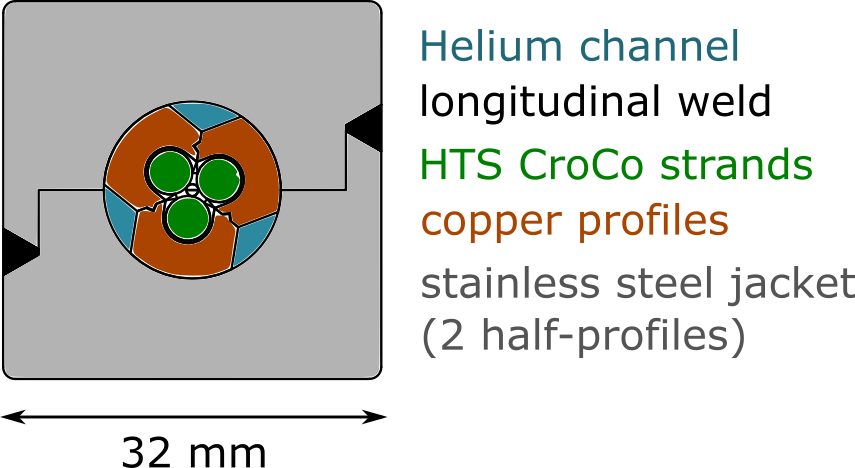Development of a HTS CroCo Triplet sample for quench investigations
For the use of high-temperature superconductors (HTS) in future fusion magnets, the behavior of an HTS fusion conductor in the event of a fault, in which a piece of the conductor loses its superconducting properties and then exhibits a finite electrical resistance, the so-called quench, is of particular interest. In contrast to low temperature superconductors (LTS) currently used in fusion magnets, such a resistive zone propagates very slowly and there is a risk that the HTS conductor will be overheated locally and destroyed. Therefore, a dedicated sample based on the HTS CroCo conductor concept is currently being designed and fabricated within an international project. It will subsequently be tested and selectively quenched under conditions relevant for a fusion magnet.
The sample design uses stainless steel half-shells to mechanically stabilize the superconductor with inserted copper parts at the electrical connections. Both conductors are stabilized against the Lorentz forces with a clamp frame. The propagation of the quench is to be determined electrically by measuring the development of the electrical voltage along the sample as well as by the resulting heating of different parts of the sample (HTS CroCo, helium, steel sheath) using various measurement techniques. This will allow comparison with already performed thermal-hydraulic modeling and, if necessary, should serve the need to refine the model in order to predict the behavior of HTS fusion magnets with greater confidence in the future.

